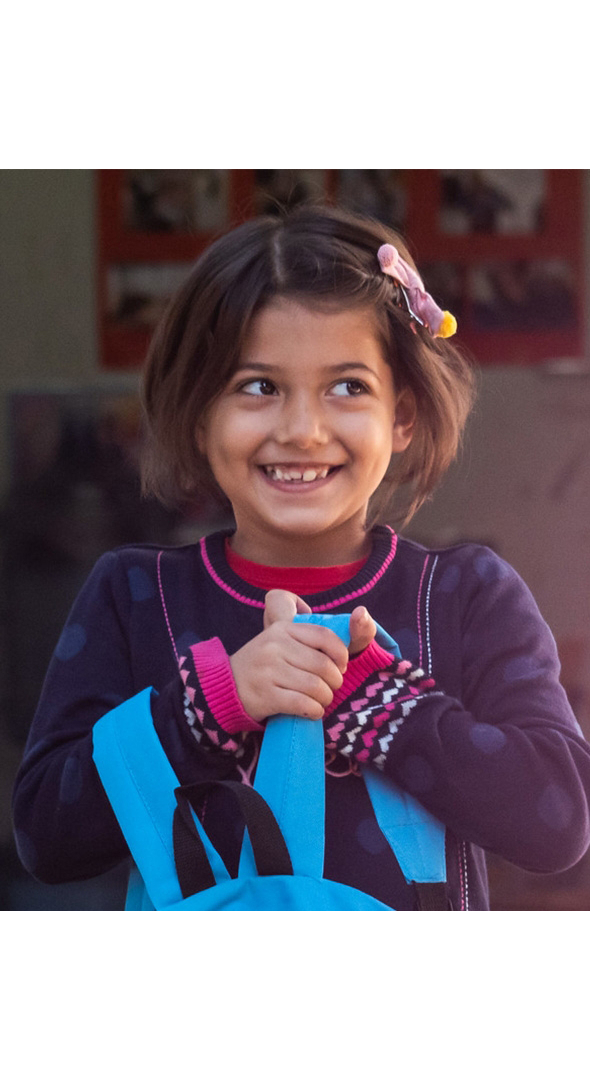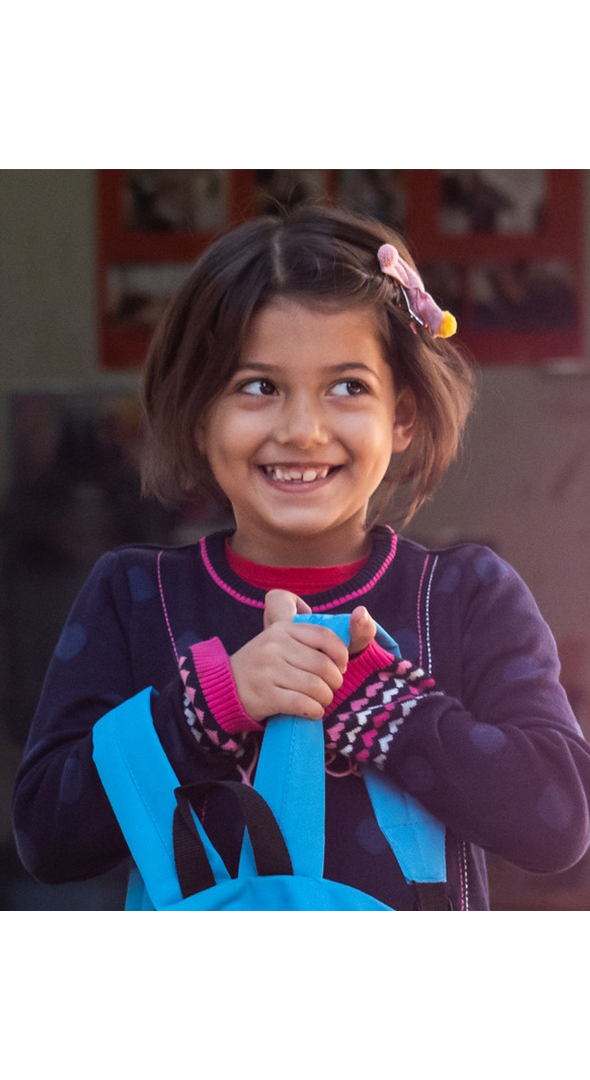Some 35 million more children under five at risk if child mortality goal not met
2013-09-13
NEW YORK/ HONG KONG, 13 September 2013- A new UNICEF report shows that if current trends continue, the world will not meet Millennium Development Goal 4 – to cut the rate of under-five mortality by two-thirds by 2015. Worse, if current trends continue, the goal will not be reached until 2028.
 The cost of inaction is alarmingly high: as many as 35 million more children could die mostly from preventable causes between 2015 and 2028, if the global community does not take immediate action to accelerate progress.
The cost of inaction is alarmingly high: as many as 35 million more children could die mostly from preventable causes between 2015 and 2028, if the global community does not take immediate action to accelerate progress.That is the bad news. But the report provides many points of good news as well. It demonstrates that dramatic improvements in child survival are possible. Globally, the annual number of under-five deaths fell from an estimated 12.6 million in 1990 to approximately 6.6 million in 2012. Over the past 22 years, the world saved around ninety million lives that might otherwise have been lost.
“Yes, we should celeate the progress,” said Anthony Lake, UNICEF Executive Director. “But how can we celeate when there is so much more to do before we reach the goal? And we can speed up the progress - we know how, but we need to act with a renewed sense of urgency,” he said.
Just over a year ago, the Governments of Ethiopia, India and the United States, together with UNICEF, launched Committing to Child Survival: A Promise Renewed, a global effort to stop children from dying of causes that are easily prevented.
So far, 176 governments have signed a pledge, vowing to accelerate progress on child survival. Hundreds of civil society, religious groups and private individuals have also pledged support for the shared goal of giving every last child the best possible start in life.
![(Centre) Irma Irene Yat Chú, an indigenous Mayan woman, holds her 1-year-old daughter, Lisbeth Gaiela, at home in the community of Chivencorral in Cobán Municipality, in Alta Verapaz Department. Volunteer health workers from a community health centre, (left-right) Laura de Jesús Icoó Pop and Mario Cucul, prepare a measles vaccine for Lisbeth. The centre, run by the Ministry of Health with support from UNICEF, serves a population of 3,476 and is open twice a week. Through home visits, volunteer health workers provide routine health care and immunizations for pregnant women and children under age 5 who are unable to travel to the health centre. [#6 IN SEQUENCE OF EIGHT] In November 2012 in Guatemala, the Government and other partners are continuing to assure sustained routine immunization of children now reaching 92 per cent of all infants against a range of vaccine-preventable diseases. The countrys last endemic case of measles was in 1997. In the entire Americas Region (covering North, Central and South America), the last endemic measles case was in 2002 and the last endemic case of rubella was in 2009 part of global efforts to eradicate these diseases. Worldwide, measles remains a leading cause of death among young children: In 2010, an estimated 139,300 people mainly children under the age of 5 died from the disease. Nevertheless, these deaths decreased by 71 per cent from 2001 to 2011, thanks in part to the Measles & Rubella Initiative, a global partnership led by the American Red Cross, the United Nations Foundation, the United States Centers for Disease Control and Prevention (CDC), WHO and UNICEF. In Guatemala, despite this success, significant other challenges for children remain, much of it related to poverty levels that affect more than half of all children and adolescents. Poverty also contributes to chronic malnutrition affecting half of all under-5 children (with higher rates among indigenous populations); an average national education level of under six years of primary school (under three years for the rural poor); and high, though decreasing, rates of violence. Guatemala is also one of the worlds most vulnerable countries to climate change, suffering a major climate-related emergency every year since 2008. On the positive side, birth registration is improving, with more than 95 per cent of newborns now being registered. UNICEF is working with the Government and other partners to sustain achievements in health, address the high levels of malnutrition, strengthen responses to crimes against children and increase protection services for children throughout public services.](/wp-content/uploads/2015/12/Child_Mortality_017-300x199.jpg) The 2013 Progress Report on Committing to Child Survival: A Promise Renewed examines trends in child mortality since 1990, analyses the main causes of under-five deaths, and highlights national and global efforts to save children’s lives. The progress made to date is due to the collective efforts of governments, civil society and the private sector, as well as the increase in affordable, evidence-based interventions, such as insecticide-treated mosquito nets, medicines, vaccines, proper breastfeeding, nutritional supplements and therapeutic food, rehydration treatment for diarrhoea, and improved access to safe water and sanitation, among others.
The 2013 Progress Report on Committing to Child Survival: A Promise Renewed examines trends in child mortality since 1990, analyses the main causes of under-five deaths, and highlights national and global efforts to save children’s lives. The progress made to date is due to the collective efforts of governments, civil society and the private sector, as well as the increase in affordable, evidence-based interventions, such as insecticide-treated mosquito nets, medicines, vaccines, proper breastfeeding, nutritional supplements and therapeutic food, rehydration treatment for diarrhoea, and improved access to safe water and sanitation, among others.The report shows sharp reductions in preventable child deaths across all regions of the world, and at all levels of national income, including low-income countries. In fact, some of the world’s poorest countries have made the strongest gains in child survival since 1990. A few low-income countries with high child mortality rates, such as Bangladesh, Ethiopia, Liberia, Malawi, Nepal and United Republic of Tanzania, have already reduced their under-five death rates by two-thirds or more since 1990, reaching Millennium Development Goal 4 for the reduction of child deaths ahead of the 2015 deadline.
Globally, the pace of decline has accelerated with the annual rate of decline tripling since the 1990s. Sub-Saharan Africa has also accelerated its rate of decline, with its annual rate of reduction increased more than fivefold since the early 1990s. In the past seven years, Eastern and Southern Africa has been among the best performing regions in the world, reducing under-five mortality at an annual rate of 5.3 per cent in 2005-2012.
 By contrast, West and Central Africa recorded the lowest level of progress on child survival, compared to other regions around the globe. The region also has the highest rate of mortality, with almost one in every eight children dying before the age of five. West and Central Africa has had virtually no reduction in its annual number of child deaths since 1990.
By contrast, West and Central Africa recorded the lowest level of progress on child survival, compared to other regions around the globe. The region also has the highest rate of mortality, with almost one in every eight children dying before the age of five. West and Central Africa has had virtually no reduction in its annual number of child deaths since 1990.Pneumonia, diarrhoea, and malaria remain leading causes of child deaths globally, claiming the lives of around 6,000 children under five each day. Undernutrition contributes to almost half of all under-five deaths.
The first month of life is the most precarious for a young child. In 2012, close to three million babies died during the first month of life, mostly from easily preventable causes.
Reversing these devastating trends requires immediate action on multiple fronts, as outlined in the Millennium Development Goals - reducing poverty, decreasing maternal mortality, boosting education and gender equality, and promoting environmental sustainability.
“Progress can and must be made,” said Mr. Lake. “When concerted action, sound strategies, adequate resources and strong political will are harnessed in support of child and maternal survival, dramatic reductions in child mortality aren’t just feasible, they are morally imperative.”
Note for Editors:
Country progress examples
• In Bangladesh, under-five mortality rate decreased by 72 per cent from 1990 to 2012, mainly thanks to expanding immunization for children, delivering oral rehydration therapy to treat diarrhoea, and providing Vitamin A supplementation. Expanding a network of community health workers also improved the quality of healthcare and led to an increased use of health facilities. Women’s empowerment, education for mothers, improving mothers’ health and implementing strategies to reduce poverty also contributed to reducing child deaths.
• In Brazil, under-five mortality rate decreased by 77 per cent between 1990 and 2012, thanks to a combination of tactics. These include efforts to deliver healthcare at the community level, improvements in sanitation conditions, providing mothers with knowledge, promoting breastfeeding and expanding immunization.
• Ethiopia, a co-sponsor of the Call to Action, has recorded tremendous gains in reducing the under-five mortality rate, with a dramatic 67 per cent reduction since 1990. The health extension programme implemented in Ethiopia is one example of how critical community health workers are in providing quality care to children and mothers in remote areas. The programme which was launched in 2004 currently deploys 38,000 government-paid female health extension workers. UNICEF supports the programme by providing supplies including vaccine storage equipment, delivery beds and medications, and supporting training for health workers. The programme also provides treatment of severe acute malnutrition, diarrhoea, malaria and pneumonia.

![As her mother watches, a man health worker marks a girl's fingernail to indicate that she has received a dose of oral polio vaccine, during the door-to-door polio NIDs in the village of Beles in Tigray Region. [#5 IN SEQUENCE OF SIXTEEN] From 1 to 5 April 2005 in Ethiopia, the first of two rounds of National Immunization Days (NIDs) against polio this year targeted 14.7 million children under five. Although Ethiopia had been polio-free for four years, the current NIDs are in response to two cases of polio detected in children in the Tigray Region in December 2004 and early January 2005. Some 100,000 volunteers and health workers are participating in the campaign which will go door-to-door in an effort to reach all children. UNICEF is providing 21 million doses of vaccine for the campaign. The Ethiopian outeak is part of a larger outeak in many previously polio-free African countries, following the suspension of polio immunization campaigns for several months in northern Nigeria in late 2003 and part of 2004 that caused a surge of new cases. Mass vaccinations resumed in Nigeria early this year and NIDs against the disease are now underway in 22 African countries, aimed at reaching 100 million children.](/wp-content/uploads/2015/12/Child_Mortality_016-300x200.jpg)
About Committing to Child Survival: A Promise Renewed
A Promise Renewed is a global movement that seeks to advance Every Woman Every Child– a strategy launched by United Nations Secretary-General Ban Ki-moon to mobilize and intensify global action to improve the health of women and children around – through action and advocacy to accelerate reductions in preventable maternal, newborn and child deaths.
The movement emerged from the Child Survival Call to Action, a high-level forum convened in June 2012 by the Governments of Ethiopia, India and the United States, in collaboration with UNICEF, to examine ways to spur progress on child survival. Partners from government, civil society and the private sector emerged from the Call to Action forum with a revitalized commitment to child survival.









